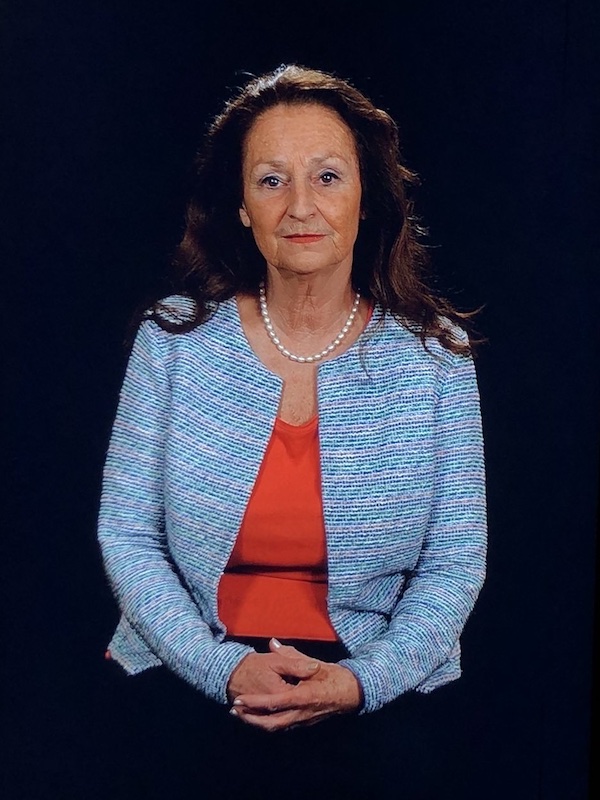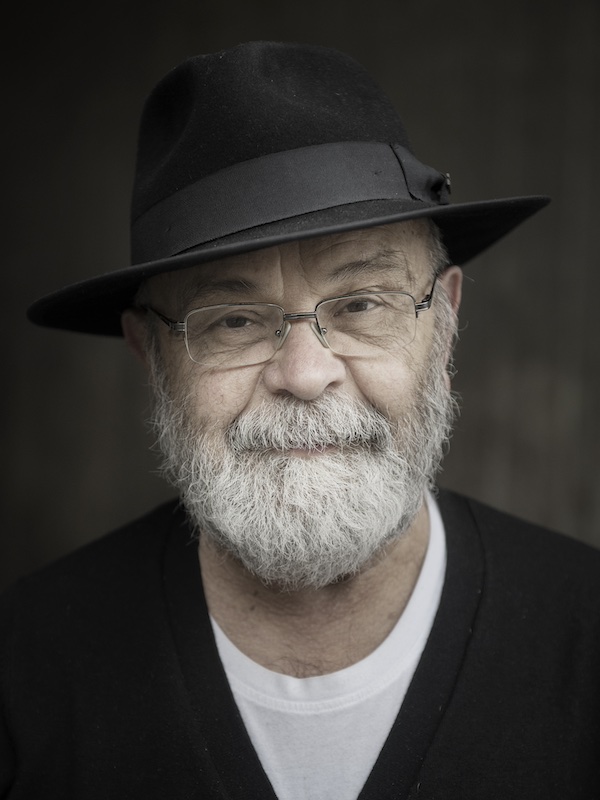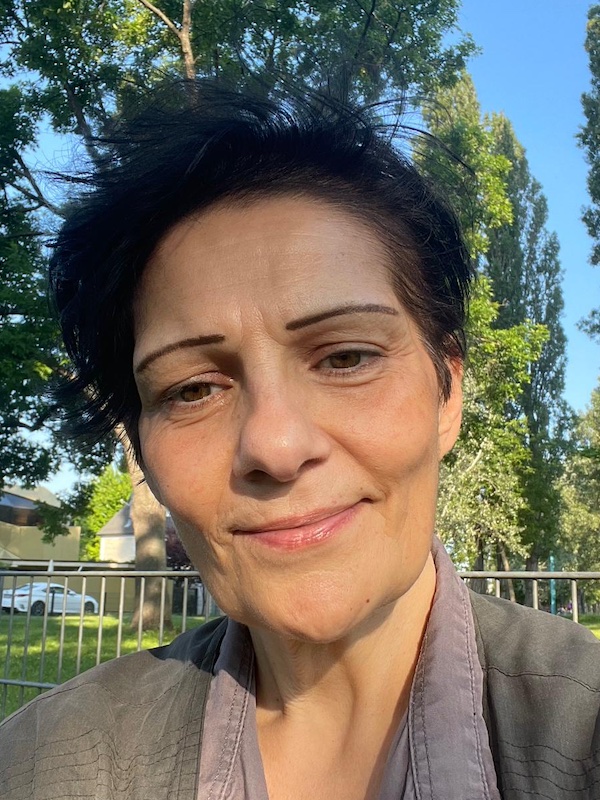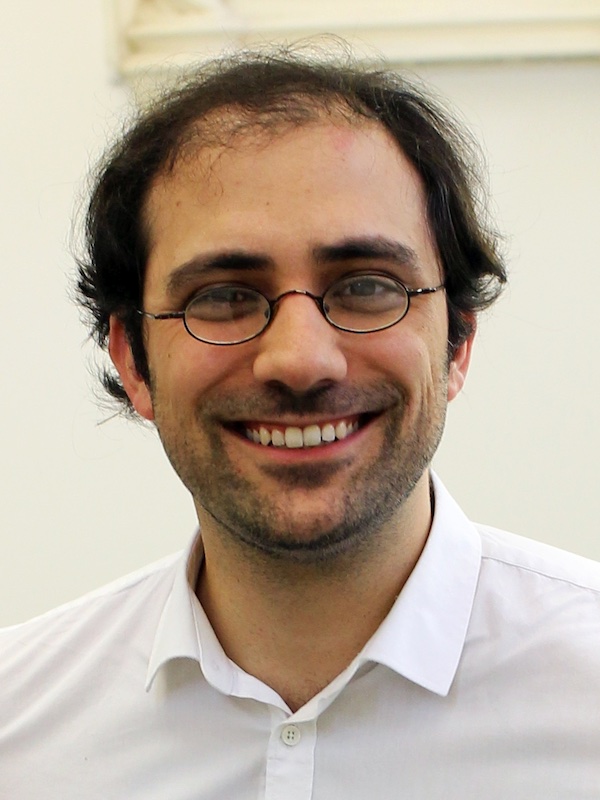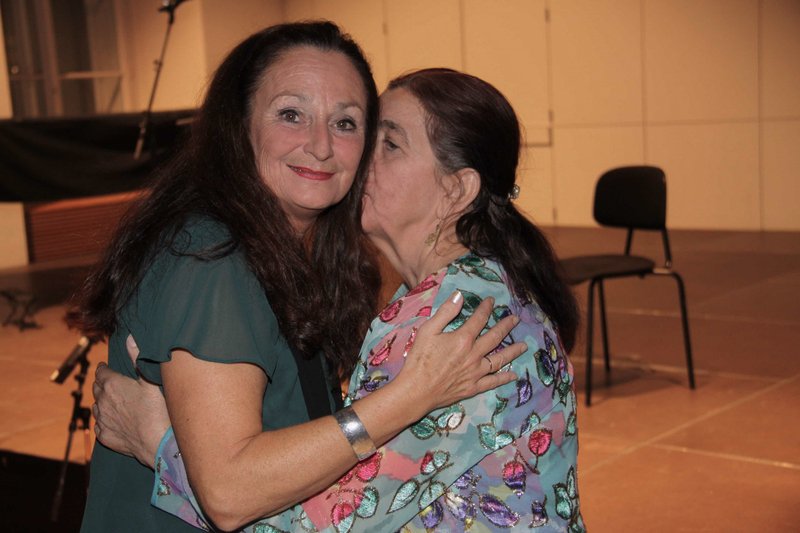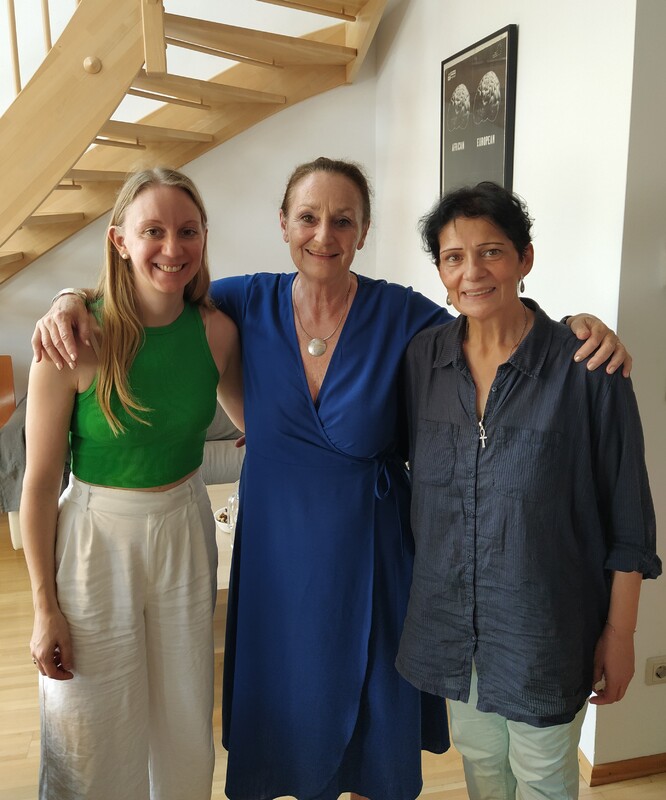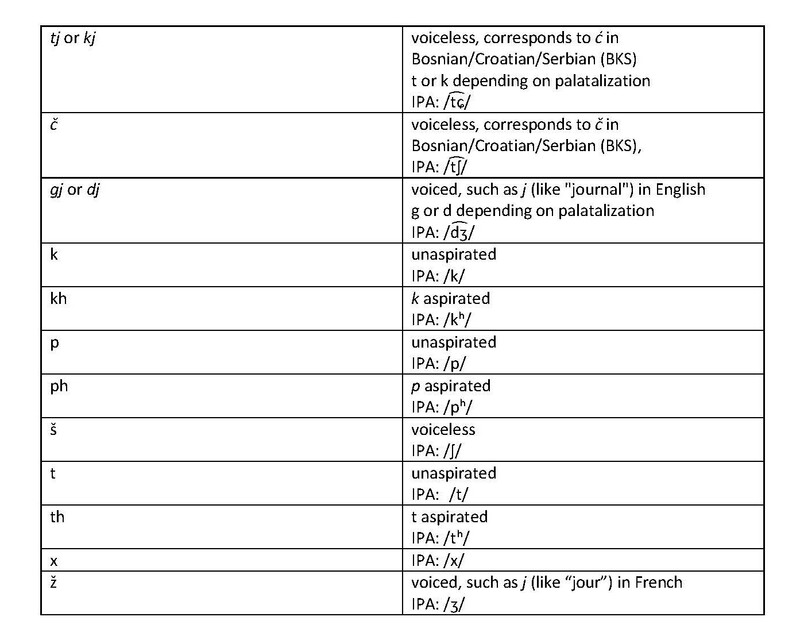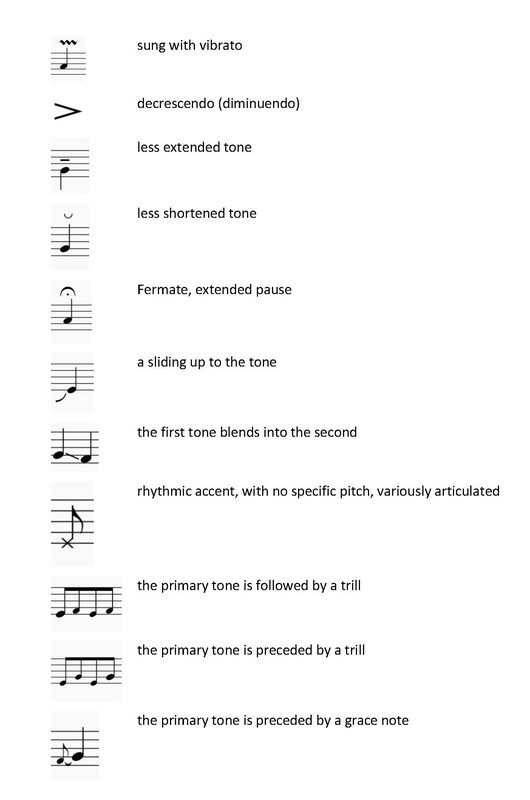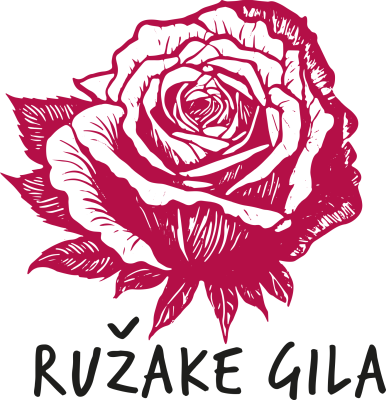Table of Contents
Research Team
Ružake gila is conducted by the MMRC (Music and Minorities Research Center) of the University of Music and Performing Arts Vienna and funded by the FWF (Austrian Science Fund).
Ursula Hemetek
Ursula Hemetek is a professor of ethnomusicology, founder of the MMRC - Music and Minorities Research Center and project manager of Ružake gila. Her research focuses on music and minorities in Austria, on which she has published extensively. In 2018, she was recognised for her academic achievements with the Wittgenstein Award of the Austrian Science Fund FWF, the most prestigious recognition of the Republic of Austria in the field of sciences.
"Ruža was the reason why I became interested in Romani music as an ethnomusicologist. In 1988, she appeared in a television documentary entitled Ihr werdet uns nie verstehen / You Will Never Understand Us, created by Bert Breit and Xaver Schwarzenberger. At the end of the documentary, she sang a song while standing on the Reichsbrücke. It touched me deeply, even though I didn't understand a word and had no idea about this kind of music. I got to know Ruža through Mozes Heinschink in 1989 and it took some time before Ruža was ready to share her songs with me. I first had to learn that Ruža was giving me a gift with every song. Sa tja patjivake, Uschi she often said after a song, which means something like in your honor. A deep friendship developed over the years, and I was able to support Ruža 's stage career. We have experienced a lot together and I am grateful for all the beautiful things that Ruža has given me and so many others."
Mozes F. Heinschink
Mozes F. Heinschink is an expert on Romani dialects and has been studying the language and culture of the Roma since 1959. He is the creator of one of the world's most extensive collections of ethnographic audio documents of Roma (The Heinschink Collection), which is archived in the Phonogrammarchiv of the Austrian Academy of Sciences. As a Romani expert, he has received numerous teaching assignments in Austria and abroad and is active as a translator in numerous functions. Mozes F. Heinschink is also a founding and former board member of the Romano Centro Association. He was awarded the honorary title of professor for his extensive commitment to Roma research.
"In 1959, I met Roma at Ringelseeplatz in Vienna's 21st district and was immediately warmly welcomed into Ruža's family. I was fascinated by the rich culture of the Roma, especially by Ruža's great songs, her father's stories and the openness and hospitality of this community. A lifelong close bond developed with the whole family, and I became the godfather to all five of Ruža's children. My desire to preserve their songs and their father's stories from oblivion on recordings was the impetus for my entire documentation work on the languages and oral culture of the Roma to this day."
Eva Leick
Eva Leick works as a research assistant for the Ružake gila project. She is co-responsible for curating the digital website. She never got to know Ruža Nikolić-Lakatos personally, as she had already passed away by the time the project started. Nevertheless, she is close to the singer through her intensive work with the archive material and the exchange with her family and confidants.
Christiane Fennesz-Juhasz
Christiane Fennesz-Juhasz is an ethnomusicologist, AV-archivist, and curator at the Phonogrammarchiv of the Austrian Academy of Sciences. She is intensively involved with the music and oral traditions of the Roma. Ruža was one of the first Romani women whose music she got to know in 1989. Over the years she has been able to work with Ruža again and again: "Such an extraordinary voice, such a great woman!"
Manuela Nikolić
Manuela Nikolić is the second-born daughter of Ruža Nikolić-Lakatos and Mišo Nikolić. She is an important partner in the project Ružake gila. As a contemporary witness, she provides valuable insights into the songs and the life of her mother. Growing up with music, she founded the swing and funk band One2Free (1990-2004) together with her younger brother Sascha, in which she was a singer. The band dissolved following the death of her brother in 2004. The children's musical creativity also influenced their parents' music, which ultimately resulted in The Gypsy Family, with whom Ruža Nikolić-Lakatos performed from 1993 onwards. Her mother is still a great musical inspiration to Manuela today. Manuela herself is a mother to a daughter who now works as a musical actress. Together with her brothers, Manuela is the heir to Ruža's musical legacy and is committed to making it available to the general public.
"I am the daughter of Ruža Nikolić-Lakatos. I am the second-born and have an older brother called Johnny and two younger ones called Martin and Mischa. One of us, Sascha, the middle son, unfortunately left us far too early at the age of 34! He was the one who spiced up mom’s and dad's music with his talent, the guitar and the bass. I miss him very much! Sascha and I founded a modern band, One2Free. This allowed us to develop ourselves and support our parents musically and learn from each other. The love for music, creating it according to our feelings, was always exemplified to us by our parents. And so, it came about that Sascha concentrated on the traditional music of our parents. The band Rusza N. Lakatos & The Gypsy Family came into being almost by itself. Ruža inspired us all and so she passed on her talent to her granddaughter, my daughter, Shireen! Today she is a successful musical actress! Thank you, mom, thank you, dad!"
Malik Sharif
Malik Sharif is Research Coordinator and Deputy Director of the MMRC - Music and Minorities Research Center. With his expertise, he significantly supports the research and implementation process of the Ružake gila project and acts as coordinator for legal, technical and specialist processes.
Research Process
Ružake gila is based on years of collaboration and close familiarity between the singer Ruža Nikolić-Lakatos and ethnomusicologist Ursula Hemetek. The researcher has accompanied and documented Ruža's artistic development for over 30 years. The archive of the Department for Folk Music Research and Ethnomusicology contains long-term documentation with over 100 hours of recordings of her songs, exploratory field research recordings and recordings of public performances. The first documentation dates from October 25, 1989, and the beginning of the collaboration was not an easy one, as the Lovari music was aimed primarily at their own people.
An article in the Wiener Zeitung from January 30, 1998, describes the initial research process:
"The fact that the musician Ruža Nikolić-Lakatos and her family agreed to this process of opening up is partly thanks to the patience and empathy of the scientist Hemetek: 'The Burgenland Croats were always very proud when I came and recorded something. The researcher from Vienna comes and is interested in our culture. It wasn't like that at all with the Roma. There were some who I got to know very slowly, they tested me for a long time. In long conversations, they wanted to find out what I actually wanted and whether my intention was not similar to that of many researchers in the history of the Roma, who only harmed the people with their research.’ During the National Socialist era, the Roma were 'researched' and then sent to concentration camps. Such experiences run deep. But at some point, the ice was broken and they realized that they could rely on the ethnomusicologist. They sat together in Ruža's cosy kitchen, 'where there is never any peace'. The husband was there, five grown-up children went in and out with their friends."
Source:
- Herner, Christine. „Durch die Lieder kann man etwas erreichen! Die Roma-Sängerin RNL als musikalische Botschafterin ihres Volkes.“ Wiener Zeitung. 30.01.1998
© Petar Tyran (2016)
Ethnomusicologist Ursula Hemetek with singer Ruža Nikolić-Lakatos
A great intimacy developed between the two women, which enabled a decades-long research process. Thanks to Ruža's willingness to present her songs in public, Ursula Hemetek was able to support and accompany the singer's stage career. This also meant working in an applied-oriented way and contributing to the socio-political equality of Roma in Austria.
After Ruža Nikolić-Lakatos' death on May 4, 2022, Ursula Hemetek was keen to make the musical treasure that lay dormant in the archive at least partially accessible to the public, so that Ruža's songs could live on, as she had wanted. The subsequent research work at the MMRC, to create the digital exhibition Ružake gila, was carried out together with Ruža's companions, but above all with her daughter Manuela Nikolić.
© Claudia Strate (2023)
Eva Leick, Ursula Hemetek and Manulea Nikolić after a field research interview for Ružake gila
Videos
In this interview with Koschka Hetzer from 1994, Ursula Hemetek explains her approach to Ruža Nikolić-Lakatos' songs and her fascination with them.
In this interview, ethnomusicologist Ursula Hemetek reflects on her long-term research process with Ruža Nikolić-Lakatos.
About the Text Transcriptions
The Romani spelling was standardised for this exhibition. Romani does not exist as a standardised written language, which is why some of the Gypsy Family’s song titles have a different spelling. The standardised character system used here follows these rules:
Sources and Further Reading
- Cech, Petra, Fennesz-Juhasz Christiane und Heinschink Mozes F. Lovarenge paramiči taj tekstura anda Österreich. Texte österreichischer Lovara. Arbeitsbericht 2 des Projekts Kodifizierung der Romanes-Variante der österreichischen Lovara. Hrsg. von Halswachs, Dieter. Wien: Romano Center, 1999. PDF
- Fennesz-Juhasz, Christiane. “Musik der Vlach-Roma“. In: Rombase. Didactically edited information on Roma, 2002. PDF
- Fennesz-Juhasz, Christiane. 2011. „Expertise Fennesz-Juhasz. Lieder der Lovara,“ UNESCO Österreich. Lieder der Lovara. Zugriff am 04.03.2024. PDF
- Heinschink, Mozes F. und Cech, Petra. Wörterbuch. Arbeitsbericht 3 des Projekts Kodifizierung der Romanes-Variante der österreichischen Lovara. Hrsg. von Halwachs, Dieter W. Wien: Romano Centro, 1999. PDF
- Heinschink, Mozes. F. 2010. „Expertise Heinschink. Lieder der Lovara.“ UNESCO Österreich. Lieder der Lovara. Zugriff am 04.03.2024. PDF
- Heinschink, Mozes F. und Hemetek, Ursula (Hrsg.). Roma, das unbekannte Volk. Schicksal und Kultur. Wien: Böhlau, 1994.
- Heinschink, Mozes F., und Cech, Petra. Basisgrammatik. Arbeitsbericht 1a des Projekts Kodifizierung der Romanes-Variante der Österreichischen Lovara. Hrsg. Von Halwachs, Dieter W. Wien: Romano Centro, 1999. PDF
About the Romani Translation of the Digital Exhibition
Ružake gila is available in three languages: German, English, and Romani. Romani is not a standardized language and exists in many different variants worldwide. Its writing system is also inconsistent. The variant that Ruža spoke is Lovari-Romani, influenced by Hungarian. To make the texts of the digital exhibition comprehensible for the international Roma community, the translator used intratextual glosses to include major non-Lovari variants in brackets, in cases where the Lovari term may be less familiar to non-Lovari Romani speakers.
Different experts were responsible for this: The song lyrics — mostly taken from already published sources — were edited and, in some cases, complemented by Mozes F. Heinschink and Christiane Fennesz-Juhasz.
The timeline was translated by Mozes F. Heinschink and Christiane Fennesz-Juhasz.
All other texts were translated by Gyula Vamosi.
The translators use a shared set of orthographic rules. Sometimes, different approaches in expression can be identified. For example, there is no word for ‘ethnomusicology’ in Romani. Therefore, creative paraphrasing is necessary, which can vary. The challenge lies in adapting a primarily orally transmitted language for academic written texts.
The project team behind Ružake gila considers the Romani translation of the digital exhibition an important political statement. It proves that it is possible to use a primarily oral language, which is threatened with extinction, for academic purposes. Furthermore, it brings international visibility to the language of a marginalized minority.
About the Musical Transcriptions
The musical transcriptions in this exhibition are to be understood as rough transcriptions. In each case, the first verse of the vocal part is reproduced. The guitar accompaniment is transcribed only exemplary for some songs. The note values for the free-rhythmic songs are to be understood as approximate values. An attempt has been made to indicate the ornaments, which are a characteristic of the singing style, using additional symbols.
About the Manuscripts
Some of the songs in this exhibition include scans of handwritten lyrics written by Mišo Nikolić. They are remarkable documents and reflect how Ruža Nikolić-Lakatos and Mišo Nikolić prepared for certain performances and wrote down the lyrics in preparation for them. Both the transmission and the creative process of the neve gila generally took place without being written down. The text notes served as a memory aid, although it has unfortunately not been possible to reconstruct the exact contexts in detail.
About the Field Research Recordings
In this exhibition, excerpts from field research recordings are published in the commentaries of some of the songs. One can hear Ruža Nikolić-Lakatos, often together with her husband Mišo Nikolić, talking to the ethnomusicologist Ursula Hemetek. They mostly discuss the content of individual songs but also Ruža's personal relationship to some melodies and lyrics, the history of the transmission of old songs and certain performance contexts. The recordings give a very private insight into the special research situation and show Ursula Hemetek's familiarity with the singer. They also reflect the method with which the researcher attempted to understand and document Ruža's songs. In addition to insights into Ursula Hemetek's historical field research, this exhibition also includes current commentaries by Manuela Nikolić and Mozes F. Heinschink on individual songs.
About Omeka S
This digital exhibition was created with the open-source content management system Omeka S. Omeka S is a platform specifically designed for the creation and management of digital collections and exhibitions, with a particular focus on the integration of Linked Open Data (LOD). By using LOD, information in Omeka S can be made accessible to a wide audience in a richly networked way.
Zitierempfehlung anzeigen
Bitte zitieren Sie diese Seite wie folgt:
Music and Minorities Research Center, "About the Project", Ružake gila, zuletzt besucht am Loading date..., doi.org/10.21939/13pq-k344

